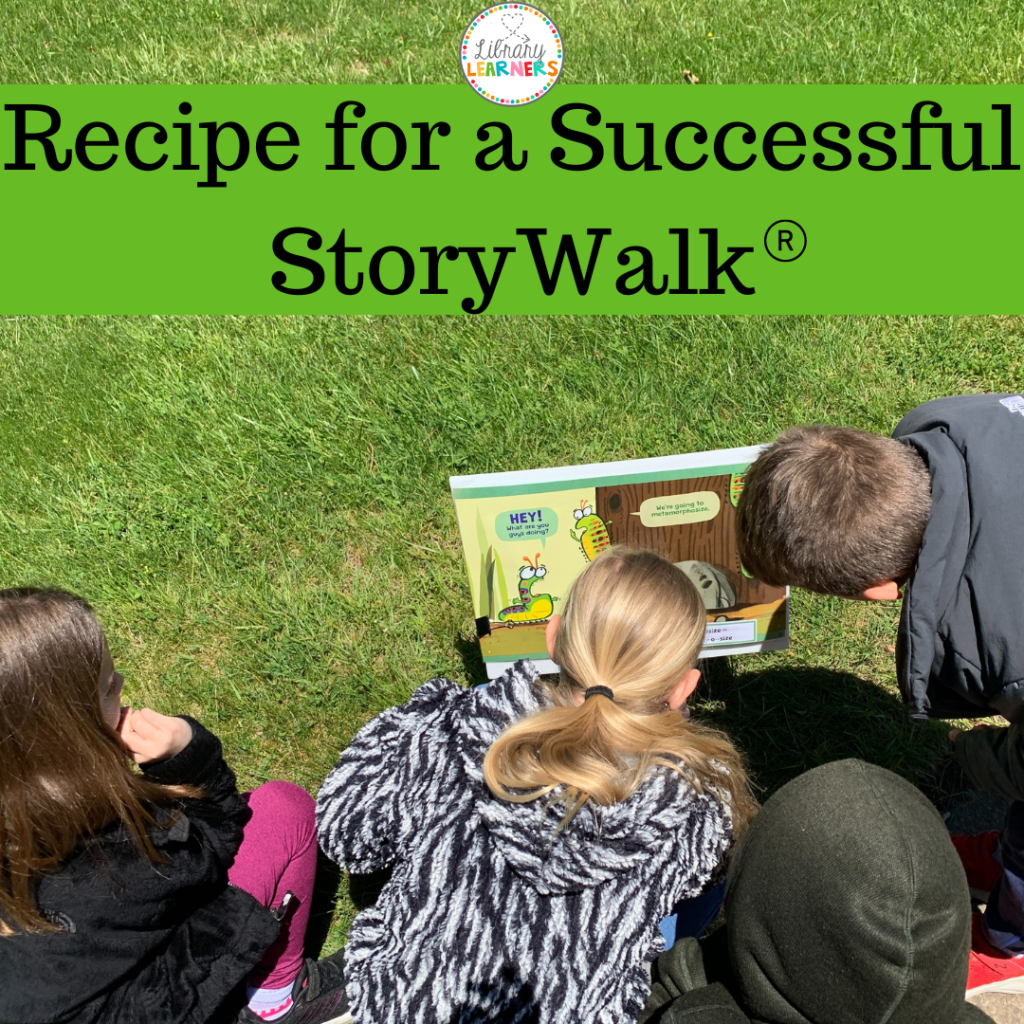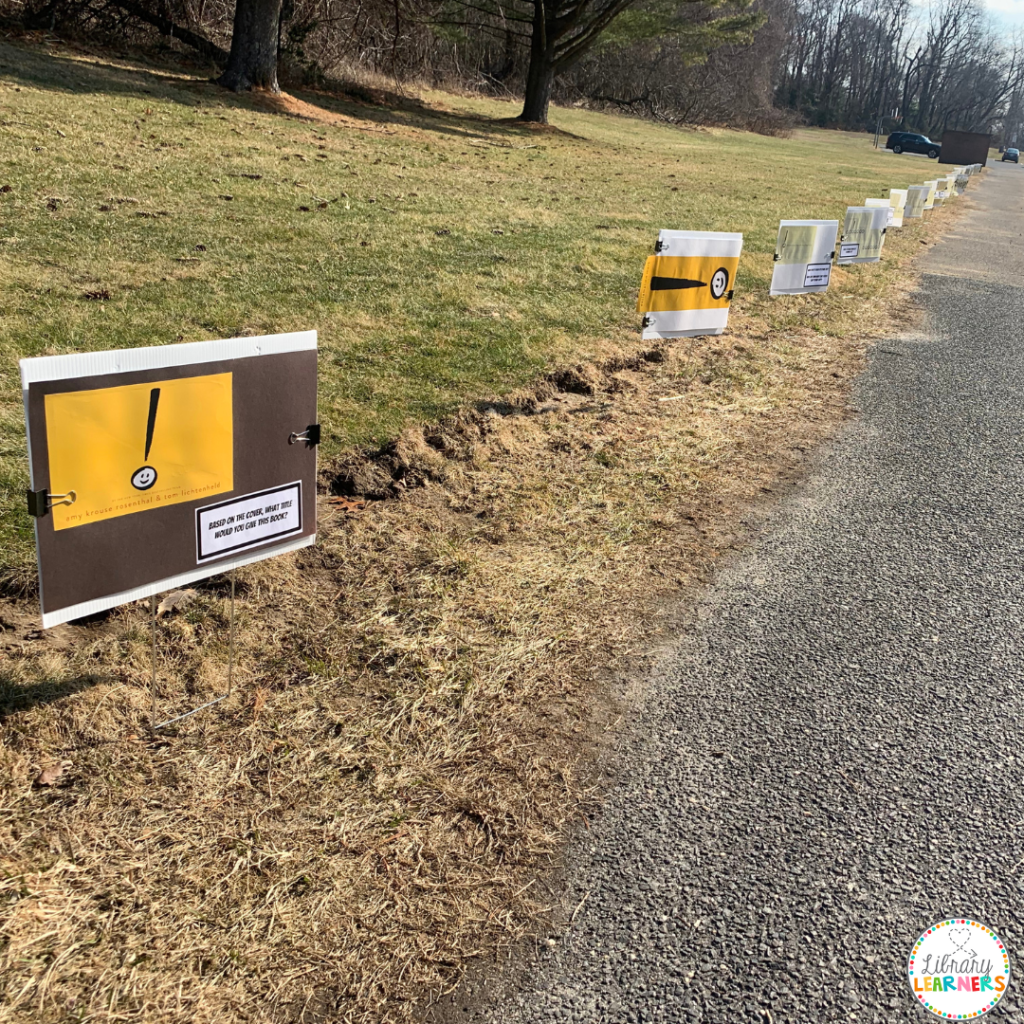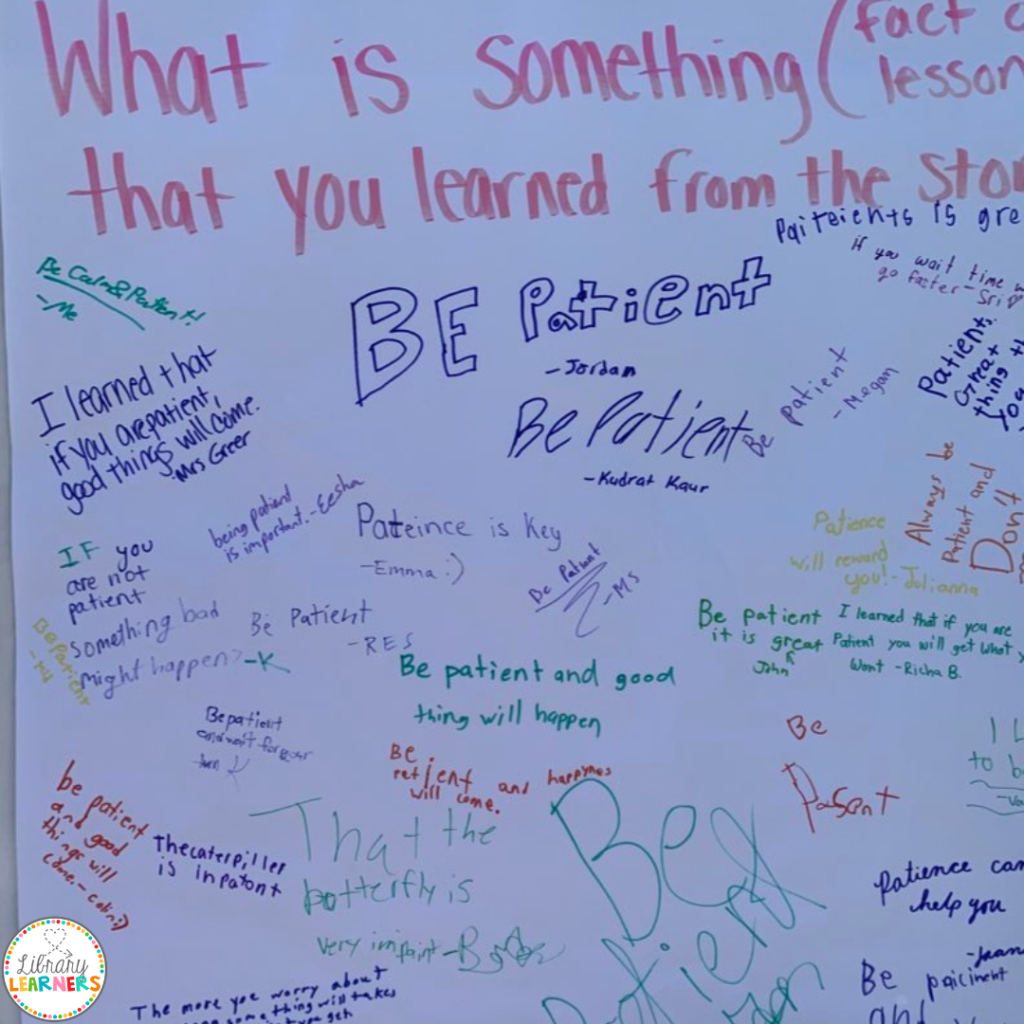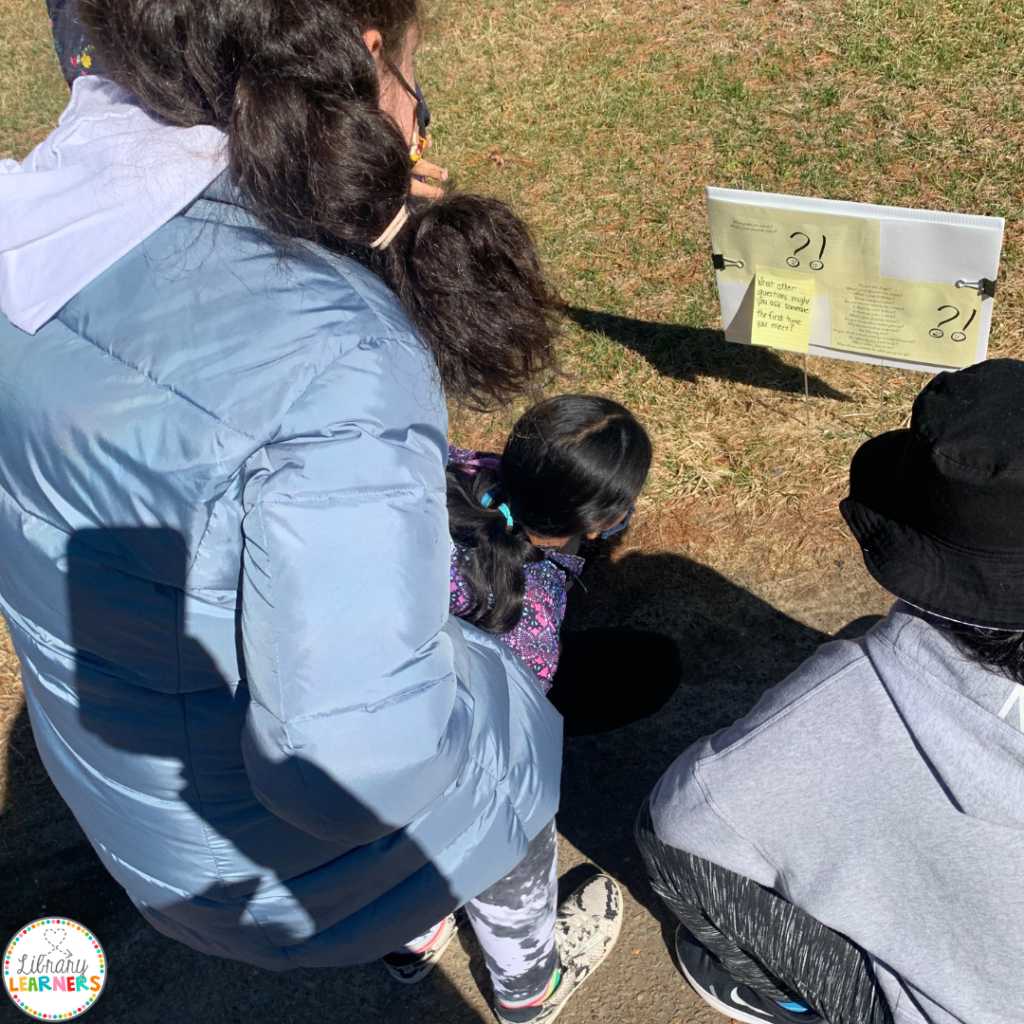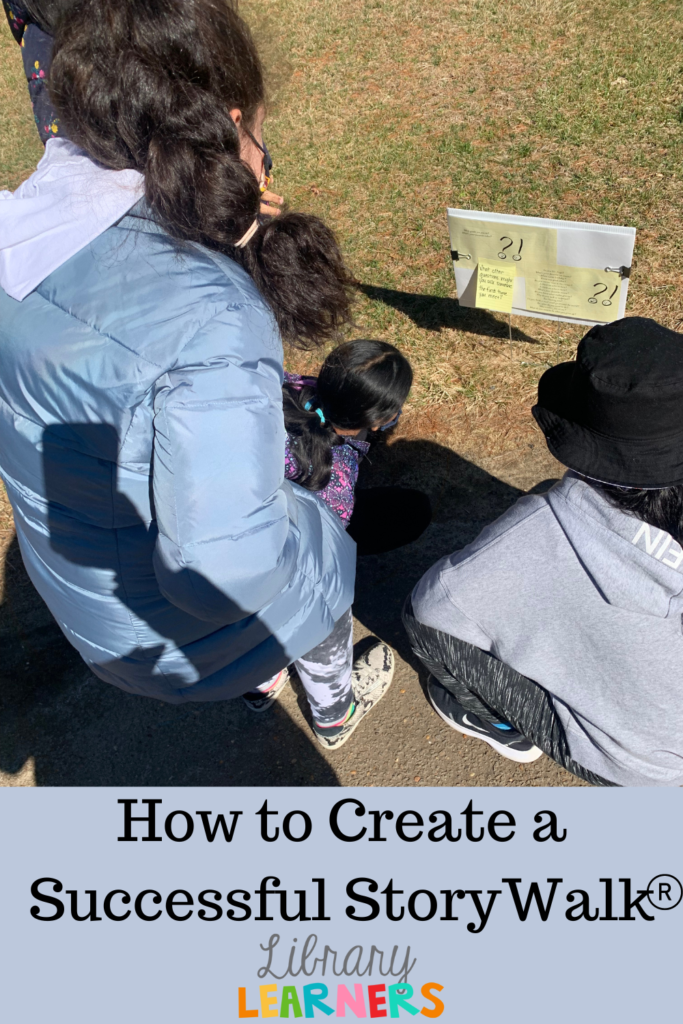Recipe for a Successful StoryWalk®
Thanks to Brenna Greer for writing this guest post about StoryWalks!®
According to PJ Hamel of King Arthur Baking Company, banana bread is the most searched for bread recipe in the United States. If you’re anything like me, you have a favorite basic recipe for banana bread, but change it up a bit depending on what’s in your pantry or what your tastes are on a given day. Putting a StoryWalk® together for your students is just like making banana bread. You can follow my recipe as is OR you might need to make some substitutions or additions based on your situation or preferences.
Before diving into my recipe, it is important to note that I came across the original recipe for a StoryWalk®, created by Anne Fergeson, several years ago. However, it wasn’t until the 2021-22 school year, in the wake of the COVID-19 pandemic, that I assembled one for my students as a means of encouraging outdoor movement and getting out in the fresh air. Since then, I’ve organized four StoryWalks® for my students, continuously refining and adapting my recipe throughout the process.
Ingredients (MATERIALS) for a StoryWalk (R)
- two (or more) copies of the book
- 12 x 18 construction paper, approximately 30 sheets
- glue
- binder clips (other options: zip ties, double sided tape, Velcro, FunTac)
- paper or sticky notes
Optional:
- 14 x 18 corrugated blank signs & H Frame (like this), approximately 25
- laminator
- post-StoryWalk® activity
Procedure for a StoryWalk
- Choose a book to be featured in your StoryWalk®.
- Assemble the pages of the book on sheets of construction paper.
To do this you’ll need to deconstruct the books. I would suggest doing it one or two pages at a time. Lay out the spreads on the construction paper (one page will be from one book, the other page will be from the second copy.)
- Add discussion questions as you see fit.
I try to spread the questions out to every 3-5 spreads so as not to cause a back-up when the students are doing the walk.
- Glue the book pages & discussion questions onto the construction paper.
If you prefer, you can write the discussion questions on sticky notes and attach them after laminating.
- Number the pieces of construction paper.
This will help ensure that they are in the proper order, especially if they get mixed up.
- Laminate each piece of construction paper.
- Set-up your StoryWalk®.
If you are using the corrugated signs, secure the construction paper pages to the sign using binder clips or your adhesive of choice.
FAQs about StoryWalks (R)
Where should I set up my StoryWalk®?
Generally, I set up my StoryWalk® outside along a path behind our school, using corrugated signs. However, during the winter walk, I encountered frozen ground, which made it impossible to use the stakes. I improvised by using binder clips to secure the pages to a fence. On a rainy day, I moved the walk inside the library and utilized magnets to secure the pages to metal shelving. Additionally, a colleague of mine set up her StoryWalk® in the school hallway by propping up the signs along the wall. Flexibility is key to adapting the setup based on weather and available resources.
Does this violate copyright laws?
No, it doesn’t. As long as you purchase two copies of the book, you are allowed to use them in this manner. However, keep in mind that altering the pages in any way is not permitted.
Additionally, remember to give credit to the original creator of the StoryWalk® by including a sign at the beginning or end. It’s an excellent opportunity to engage your students in discussions about copyright and fair use.
Where do you get your books?
I frequently order my books from Scholastic, as they offer paperbacks for less than $5 each. However, you can get the books from your preferred book vendor.
What titles do you suggest?
When selecting titles, I aim for books that are accessible to most students in grades 1-5 while also containing messages or lessons that older students can relate to on a deeper level. Some successful books I’ve used include Exclamation Mark by Amy Krouse Rosenthal & Tom Lichtenheld, The Very Impatient Caterpillar by Ross Burach, How to Catch a Snowman by Adam Wallace & Andy Elkerton, and BOY + BOT by Ame Dyckman & Dan Yaccarino. Additionally, consider enlisting the help of older students as story guides for the younger ones, allowing them to help read the story and facilitate discussions.
Those corrugated signs are expensive! What are my options?
If the cost of corrugated signs is a concern, consider seeking support from your school’s PTO or approaching local businesses such as Home Depot, Lowe’s, Staples, hardware stores, real estate companies, or sign makers to inquire about discounts or potential donations. Alternatively, you can use wooden stakes, which are a more budget-friendly option, but you’ll need to use a thicker material than construction paper to mount the book.
What do the students do while they’re waiting for their classmates to finish the StoryWalk®?
While waiting for their classmates to complete the StoryWalk®, I usually have a fun and engaging activity planned for them. For instance, after reading Exclamation Mark, we did punctuation mark yoga (make up poses that correspond with punctuation marks), and for The Very Impatient Caterpillar, students worked on a StickTogether or butterfly coloring sheets. After enjoying How to Catch a Snowman, we had a snow-themed dance party, and for BOY + BOT, they could either explore books about robots and friendship or get creative by building a robot using gears. My suggestion is to keep any follow-up activity simple yet meaningful to keep the excitement and learning going.
CONCLUSION
Just like baking a delicious banana bread, putting together a StoryWalk® requires some planning and preparation, but the end result is truly worth the effort! The students’ excitement is remarkable. They not only get to enjoy physical activity and the great outdoors, but also have the joy of reading and discussing delightful books with their classmates, leading to genuine engagement. It’s a fulfilling experience that leaves everyone involved feeling energized and thrilled, just like savoring a warm slice of freshly baked banana bread.
The links provided in this post are for convenience and informative purposes only. I have no affiliation with any of the companies or organizations.
Many Thanks to Our Guest Author!
Brenna Greer is about to embark on her 20th year as an elementary school librarian at Robertsville Elementary School in Morganville, NJ. She loves reading by the water and baking & eating banana bread. You can follow her on Twitter or Instagram @greerslibrary.

